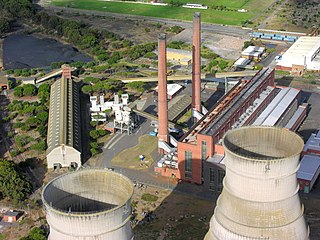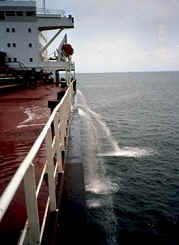Marine energy management is the application of systematic methods to measure, register and analyze the energy usage of oceangoing vessels in specific.
The goal of marine energy management is to
- maximize the (electrical or mechanical) energy generated from the minimum amount of fossil fuel , and
- maximize the useful work obtained from the minimum amount of generated energy. The IMO is the international body responsible for code regulation.
These are two separated optimization problems.
Marine energy management can both be applied on board and onshore. It is a complex problem, due to the number of inter-related energy systems on board vessels, such as the propulsion, the auxiliary engines, refrigeration systems, HVAC, etc. The weather and sea-state, plus the logistics involved in transporting goods from one port to another, also have big effects.
Marine energy management can be addressed on board through measuring devices, monitoring systems and decision-support systems. It can be addressed onshore through data analysis, leading to change in operation on board.

Propulsion is the action or process of pushing or pulling to drive an object forward. The term is derived from two Latin words: pro, meaning before or forward; and pellere, meaning to drive. A propulsion system consists of a source of mechanical power, and a propulsor.

Waste management includes the activities and actions required to manage waste from its inception to its final disposal. This includes the collection, transport, treatment and disposal of waste, together with monitoring and regulation of the waste management process.

A power station, also referred to as a power plant and sometimes generating station or generating plant, is an industrial facility for the generation of electric power. Power stations are generally connected to an electrical grid.
Electric power systems consist of generation plants of different energy sources, transmission networks, and distribution lines. Each of these components can have environmental impacts at multiple stages of their development and use including in their construction, during the generation of electricity, and in their decommissioning and disposal. We can split these impacts into operational impacts and construction impacts. This page looks exclusively at the operational environmental impact of electricity generation. The page is organized by energy source and includes impacts such as water usage, emissions, local pollution, and wildlife displacement.

Nuclear marine propulsion is propulsion of a ship or submarine with heat provided by a nuclear power plant. The power plant heats water to produce steam for a turbine used to turn the ship's propeller through a gearbox or through an electric generator and motor. Naval nuclear propulsion is used specifically within naval warships such as supercarriers. A small number of experimental civil nuclear ships have been built.

Eco-labels and Green Stickers are labeling systems for food and consumer products. Ecolabels are voluntary, but green stickers are mandated by law; for example, in North America major appliances and automobiles use Energy Star. They are a form of sustainability measurement directed at consumers, intended to make it easy to take environmental concerns into account when shopping. Some labels quantify pollution or energy consumption by way of index scores or units of measurement, while others assert compliance with a set of practices or minimum requirements for sustainability or reduction of harm to the environment. Many ecolabels are focused on minimising the negative ecological impacts of primary production or resource extraction in a given sector or commodity through a set of good practices that are captured in a sustainability standard. Through a verification process, usually referred to as "certification", a farm, forest, fishery, or mine can show that it complies with a standard and earn the right to sell its products as certified through the supply chain, often resulting in a consumer-facing ecolabel.

Marine engineering includes the engineering of boats, ships, oil rigs and any other marine vessel or structure, as well as oceanographic engineering, oceanic engineering or ocean engineering. Specifically, marine engineering is the discipline of applying engineering sciences, including mechanical engineering, electrical engineering, electronic engineering, and computer science, to the development, design, operation and maintenance of watercraft propulsion and on-board systems and oceanographic technology. It includes but is not limited to power and propulsion plants, machinery, piping, automation and control systems for marine vehicles of any kind, such as surface ships and submarines.

Illegal, unreported and unregulated fishing (IUU) is an issue around the world. Fishing industry observers believe IUU occurs in most fisheries, and accounts for up to 30% of total catches in some important fisheries.
A mobile emission reduction credit (MERC) is an emission reduction credit generated within the transportation sector. The term “mobile sources” refers to motor vehicles, engines, and equipment that move, or can be moved, from place to place. Mobile sources include vehicles that operate on roads and highways, as well as nonroad vehicles, engines, and equipment. Examples of mobile sources are passenger cars, light trucks, large trucks, buses, motorcycles, earth-moving equipment, nonroad recreational vehicles, farm and construction equipment, cranes, lawn and garden power tools, marine engines, ships, railroad locomotives, and airplanes. In California, mobile sources account for about 60 percent of all ozone forming emissions and for over 90 percent of all carbon monoxide (CO) emissions from all sources.
Environmental issues in Brazil include deforestation, illegal wildlife trade, illegal poaching, air, land degradation, and water pollution caused by mining activities, wetland degradation, pesticide use and severe oil spills, among others. As the home to approximately 13% of all known species, Brazil has one of the most diverse collections of flora and fauna on the planet. Impacts from agriculture and industrialization in the country threaten this biodiversity.

Cruise ships carrying several thousand passengers and crew have been compared to “floating cities,” and the volume of wastes that they produce is comparably large, consisting of sewage; wastewater from sinks, showers, and galleys (graywater); hazardous wastes; solid waste; oily bilge water; ballast water; and air pollution. The waste streams generated by cruise ships are governed by a number of international protocols and U.S. domestic laws, regulations, and standards, but there is no single law or rule. Some cruise ship waste streams appear to be well regulated, such as solid wastes and bilge water. But there is overlap of some areas, and there are gaps in others.
Marorka is a company which specializes in marine energy management. Marorka's head office is in Reykjavik, Iceland along with its servers and data storage infrastructure are supplied with electricity generated using 100% renewable energy resources – geothermal and hydroelectric. Marorka has international offices in Dubai, London and Shanghai. Marorka's mission is to deliver products and services to vessel owners and operators to save fuel, increase profitability and reduce harmful emissions. The company was founded in June 2002 and resulted from the PhD thesis of Jón Ágúst Thorsteinsson, Entrepreneur and founder.

Waste are unwanted or unusable materials. Waste is any substance which is discarded after primary use, or is worthless, defective and of no use. A by-product by contrast is a joint product of relatively minor economic value. A waste product may become a by-product, joint product or resource through an invention that raises a waste product's value above zero.
Noise and vibration on maritime vessels are not the same but they have the same origin and come in many forms. The methods to handle the related problems are similar, to a certain level, where most shipboard noise problems are reduced by controlling vibration.

Marine fuel management (MFM) is a multi-level approach to measuring, monitoring, and reporting fuel usage on a boat or ship, with the goals of reducing fuel usage, increasing operational efficiency, and improving fleet management oversight. MFM has grown in importance due to the rising costs of marine fuel and increased governmental stresses to reduce the pollution generated by the world's fleet.

The environmental impact of shipping includes air pollution, water pollution, acoustic, and oil pollution. Ships are responsible for more than 18 percent of some air pollutants.

Ballast water discharges by ships can have a negative impact on the marine environment. The discharge of ballast water and sediments by ships is governed globally under the Ballast Water Management Convention, since its entry into force in September 2017. It is also controlled through national regulations, which may be separate from the Convention, such as in the United States.
An international joint venture (IJV) occurs when two businesses based in two or more countries form a partnership. A company that wants to explore international trade without taking on the full responsibilities of cross-border business transactions has the option of forming a joint venture with a foreign partner. International investors entering into a joint venture minimize the risk that comes with an outright acquisition of a business. In international business development, performing due diligence on the foreign country and the partner limits the risks involved in such a business transaction.

On a ship, the fire room, or FR or boiler room or stokehold, referred to the space, or spaces, of a vessel where water was brought to a boil. The steam was then transmitted to a separate engine room, often located immediately aft, where it was utilized to power the vessel. To increase the safety and damage survivability of a vessel, the machinery necessary for operations may be segregated into various spaces, the fire room was one of these spaces, and was among the largest physical compartment of the machinery space. On some ships, the space comprised more than one fire room, such as forward and aft, or port or starboard fire rooms, or may be simply numbered. Each room was connected to a flue, exhausting into a stack ventilating smoke.
Autonomous cargo ships, also known as autonomous container ships or maritime autonomous surface ships (MASS), are crewless vessels that transport either containers or bulk cargo over navigable waters with little or no human interaction. Different methods and levels of autonomy can be achieved through monitoring and remote control from a nearby manned ship, an onshore control center or through artificial intelligence and machine learning, letting the vessel itself decide the course of action.










